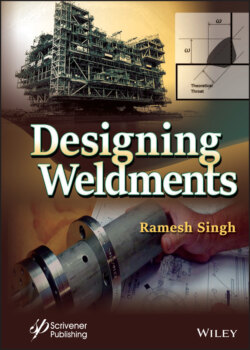Читать книгу Designing Weldments - Группа авторов - Страница 37
2.1.4.1 Metal Strength at Low Temperature
ОглавлениеAs we have seen as temperature is lowered from room temperature 75oF (24oC or 297oK) to absolute zero 1oK the atoms of an element move closer together by dimensions easily compounded from the coefficient of thermal expansion. Number of changes occurs as a result of this smaller lattice parameter. For example, the elastic module increases. In general the tensile strength and yield strength of all materials increase as the temperature is lowered to the extent that at NDT the yield and Tensile strength are equal (σo = σu). The change in these properties is variable in degree for different metals but change does occur.
When the temperature of low carbon or low alloy steel is lowered the corresponding increase in strength of metals is attributed to an increase in resistance to plastic flow. Since plastic flow is strongly dependent upon the nature of the crystalline structure, it would be logical to assume that metals with the same kind of structure would react in similar manner.
Because toughness tends to decrease as temperatures are lowered, especially for bcc-structured material like steel. Testing is often carried out to measure and monitor this property of steel. The most frequently used test specimen is notched-bar impact specimen, despite the shortcomings of this test. The popularity of impact test is due to its long established position in standards and relatively easy procedure available with laboratories to test standard Charpy V-notch specimen.
